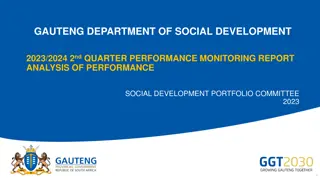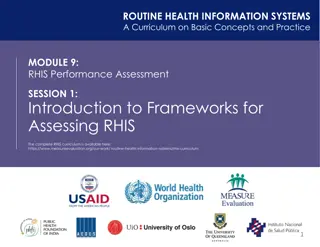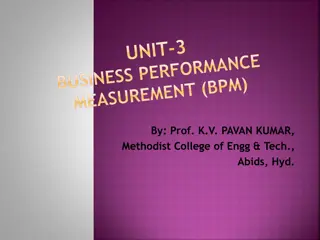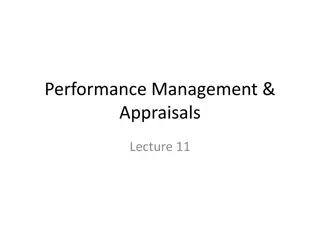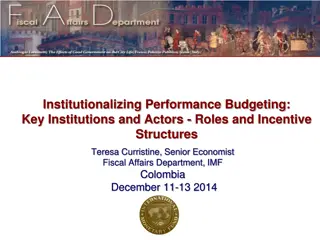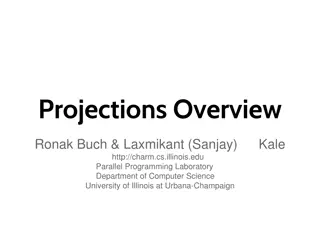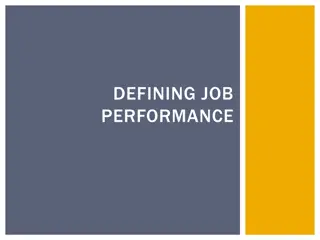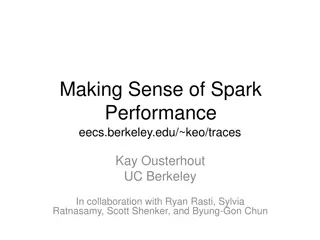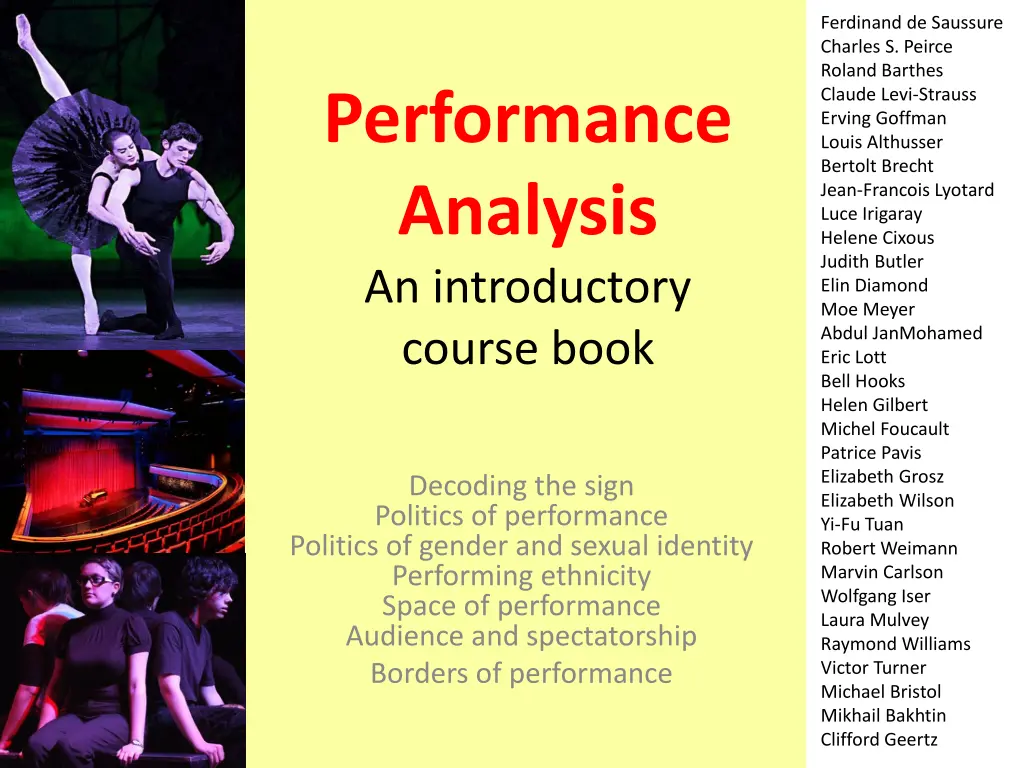
Decoding Performance Artefacts: Saussure, Peirce, and Semiotics
Explore the intricate world of performance analysis through the lens of Saussure, Peirce, and semiotics. Uncover how signs, signifiers, and signifieds shape our perception of the material world, delving into the arbitrary nature of signs and their cultural significance. Dive into a Peircean and Saussurean analysis of theatrical components, examining icons, indices, and symbols to decipher the various layers of meaning within a performance.
Download Presentation

Please find below an Image/Link to download the presentation.
The content on the website is provided AS IS for your information and personal use only. It may not be sold, licensed, or shared on other websites without obtaining consent from the author. If you encounter any issues during the download, it is possible that the publisher has removed the file from their server.
You are allowed to download the files provided on this website for personal or commercial use, subject to the condition that they are used lawfully. All files are the property of their respective owners.
The content on the website is provided AS IS for your information and personal use only. It may not be sold, licensed, or shared on other websites without obtaining consent from the author.
E N D
Presentation Transcript
Ferdinand de Saussure Charles S. Peirce Roland Barthes Claude Levi-Strauss Erving Goffman Louis Althusser Bertolt Brecht Jean-Francois Lyotard Luce Irigaray Helene Cixous Judith Butler Elin Diamond Moe Meyer Abdul JanMohamed Eric Lott Bell Hooks Helen Gilbert Michel Foucault Patrice Pavis Elizabeth Grosz Elizabeth Wilson Yi-Fu Tuan Robert Weimann Marvin Carlson Wolfgang Iser Laura Mulvey Raymond Williams Victor Turner Michael Bristol Mikhail Bakhtin Clifford Geertz Performance Analysis An introductory course book Decoding the sign Politics of performance Politics of gender and sexual identity Performing ethnicity Space of performance Audience and spectatorship Borders of performance
Part one: Decoding the Artefact INTRODUCTION The distance separating the material world from our perceptions of it. Think: Freud (unconscious, psychic), Marxism (view of real through ideology), Saussure (version of real world through sign systems), Nietzsche (reality as unknowable void), Einstein (macro-physical phenomena determined by our position relative to them), Heisenberg (in microphysics, the act of perceiving alters the perceived), Phenomenology (consciousness s construction of reality existentialism), Durkheim/Weber/Marx (stressed social origins of conceptions of the real). All theorists prescribe that our perception of the world and its objects, the meanings we ascribe to them, are made and produced in the gaze of the perceiver.
Part one: Decoding the Artefact 1.1 The sign Saussure (General Linguistics) Peirce (Collected Papers) Sign, signifier, signified The arbitrary nature of the sign Language as organized thought coupled with sound Linguistic value from a conceptual viewpoint The sign considered in its totality The word cat has no innate quality of cat-ness. Its significance is conventional; the product of an implicit agreement between members of a given interpretative community. For Saussure, the sign is more than a means of communication. It comprises the basic fabric of culture. Sign systems provide the structures in which thought occurs, shaping our perceptions and experiences.
Part one: Decoding the Artefact Exercise Choose a performance you have seen and divide its various components into icons , indices and symbols . Try to address all areas of production dynamic, static, objects, words, images, movements, lighting changes etc. [PEIRCEAN ANALYSIS] Are there elements that signify in different ways, simultaneously? (Peircean sign) Do certain theatrical forms or genres inherently tend towards one of the three models of signification? [SAUSSUREAN ANALYSIS] Signifiers (composed of material things) and signifieds (fixed conceptual things) Costume, gesture, lighting arrangement what ideas do they evoke? Are certain qualities attributed to a location by colour or lighting or style or set design? Does a character s mode of movement tell us something about him or her? Do different kinds of sign in the production suggest the same general order of meaning or meanings which are related (complementary, parallel or opposed); do they work together as a sign system?
Part one: Decoding the Artefact 1.2 Myth Barthes (Mythologies) 1.3 Structure Levi-Strauss (The Structural Study of Myth) 1.4 The frame Goffman (Frame Analysis)
Part two: Politics of Performance 2.1 Ideology Althusser (Ideology and the Ideological State Apparatuses) 2.2 Epic theatre Brecht (The Street Scene) 2.3 The postmodern avant-garde Lyotard (The Postmodern Condition)
Part three: Performing gender and sexual identity 3.1 Constructing gender 1: The property model Irigaray (This Sex Which is Not One) 3.2 Constructing gender 2: The culture/nature model Cixous (Sorties) 3.3 The drag act Butler (Gender Trouble) 3.4 Gestic criticism Diamond (Brechtian Theory/Feminist Theory) 3.5 Acting camp Meyer (The Politics and Poetics of Camp)
Part four: Performing ethnicity 4.1 The Other JanMohamed (The Economy of Manichean Allegory) 4.2 Blackface Lott (Love and Theft) 4.3 The resisting viewer hooks (Teaching Resistance) 4.4 Orality Gilbert (Describing Orality)
Part five: The performing body 5.1 Political bodies Foucault (Discipline and Punish) 5.2 Moving bodies: the mime Pavis (The Discourse of Mime) 5.3 Transgressive bodies Grosz (The Body of Signification) 5.4 The body adorned Wilson (Adorned in Dreams)
Part six: The space of performance 6.1 Enacting space Tuan (Space and Context) 6.2 Locus and Platea Weimann (Shakespeare and the Popular Tradition) 6.3 Environmental Space Carlson (Places of Performance)
Part seven: Spectator and audience 7.1 The interactive spectator Iser (Interaction between Text and Reader) 7.2 The gaze Mulvey (Visual Pleasure and Narrative Cinema) 7.3 Structure of Feeling Williams (Marxism and Literature)
Part eight: At the borders of performance 8.1 Liminal and liminoid Turner (Liminal and Liminoid, in Play, Flow, and Ritual) 8.2 The pageant Bristol (Carnival and Theatre) 8.3 Carnival Bakhtin (Rabelais and His World) 8.4 Deep Play Geertz (Deep play: Notes on the Balinese Cockfight)
Part nine: Analysing performance 9.1 The Patrice Pavis Questionnaire



